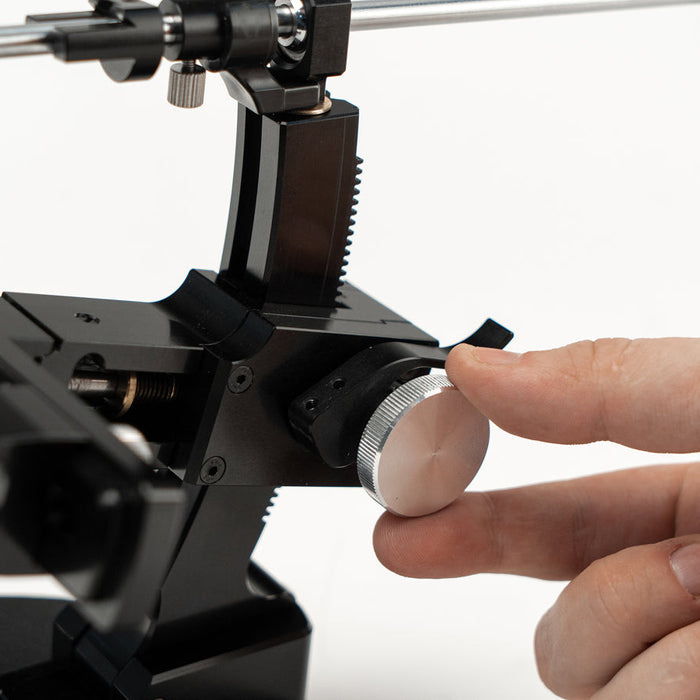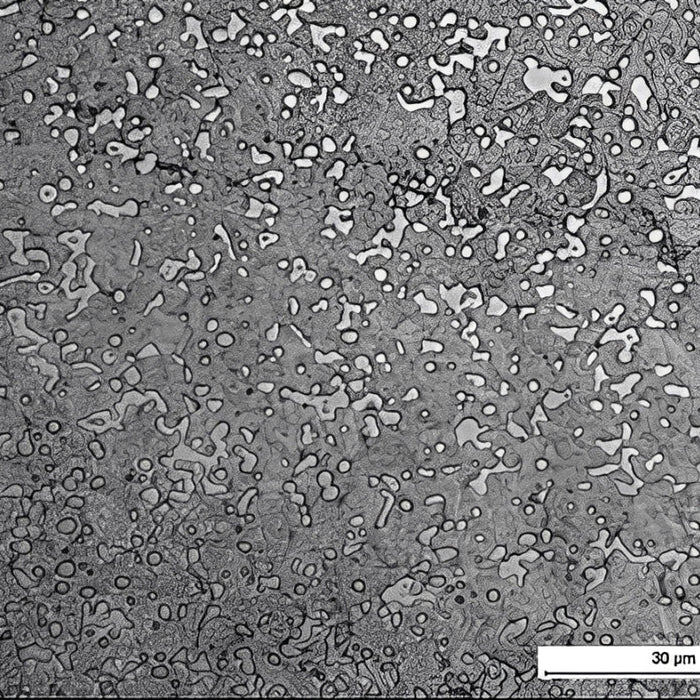Any knife, regardless of the steel hardness, the shape of the blade, and the intended purpose, sooner or later loses its sharpness. It becomes dangerous to use this knife to cut food. You have to put more pressure on it, which can cause a cut or a more serious injury.
Sharpening the blade at home is not difficult, even if the owner does not have the skills to handle professional chef's knives. To do this, manufacturers of kitchen accessories and sharpening supplies offer a variety of sharpeners. Let us look at how they differ from each other, what pros and cons they have and which option is more suitable for everyday use.
Whetstone
The most ancient and popular of the known sharpeners is an abrasive material in the rectangular shape of a bar - a whetstone. It comes in various forms, such as a single bar or a sharpening kit. In the latter case, the abrasive is embedded in a special stand or plastic housing for convenient daily use.
When buying a sharpener with a stone, you have to take into account it abrasiveness degree. One of the common variants that some manufacturers offer is a double-sided bar with 80-400 grit on one side and 600-2000 grit on the other. This allows you to remove large defects from the blade, give it the necessary sharpness, and polish it to a mirror-like surface. Fans of professional expensive knives also use stones with a grain size of up to 5000 grit for the best result.
The sharpening stones have a smooth, non-slip bottom part of the case so that they can be conveniently placed on a table or towel. Some varieties are equipped with special ponds, which collect the water excess when you moisten the stone's surface.
The process of using a stone sharpener seems simple. You have to sink the abrasive stone in water to fill its pores and constantly moisten its surface during work so that it forms a slurry on the surface. Next, drive the blade back and forth on the stone surface until the cutting edge forms a burr, and repeat this procedure for the opposite side.
It is quite difficult to properly sharpen a knife with such a sharpener. There are several nuances:
- You need to know the sharpening angle of the blade and manually maintain it during processing;
- You should apply the right amount of pressure to sharpen the edge but not spoil the stone.
Usually, only professionals or collectors of rare knives resort to hand sharpening.
Advantages:
- High efficiency and good blade processing quality;
- A wide range of stone design and grit options,
- Sharpen knives with any angle of the blade edge.
Cons - this process is time- and labor-consuming. High-quality stones can be quite expensive.
Sharpening system
Fans of high-quality cooking tools, hunting, and collectible blades often prefer a professional knife sharpener. A knife sharpener allows you to make the blade as sharp as possible and keep the factory edge angle. And the process itself resembles meditation and brings real pleasure.
In terms of design, such a knife sharpener is a dimensional structure that holds the knife motionless in the desired position and allows you to move the abrasive bar along it at a certain angle. And the sweet thing is that the abrasive bar is clamped in the system and you only have to move the rod.
TSPROF sharpening systems are some of the best in the market. They are supplied as ready-made kits, which have everything you will need to start sharpening right away. Usually, the kit includes several diamond coated sharpening stones with different grits. This allows you to reprofile or reshape the blade and remove any burrs from the edge, as well as polish it to a mirror edge.

However, you have to understand that this is still a variant of manual sharpening and it takes time to process a blade. Besides, a sharpening system takes up space. However, TSPROF offers sharpeners of different sizes and some of them can be disassembled for storage and even fit a drawer.
The advantages of this sharpener:
- maximum sharpening efficiency for any knife, regardless of the shape of the edge;
- the ability to adjust and fix the angle of the blade, with small increments.
- careful knife processing and minimized possibility of damage.
The downside is that such a setup can be expensive with all the consumables. However, such sharpeners are built for ages and even allow you to start a sharpening business.
Electric sharpener
The easiest and fastest way to sharpen a chef's knife is a sharpener with an electric drive. The process takes mere seconds and does not require any skills from the user. The device body has one or a few slots for blades with different sharpening angles. The body can be made of plastic, steel, or aluminum. This household tool is small in size and can be easily placed in the kitchen. But due to the lack of fine adjustments during the sharpening process, the abrasive element removes a lot of metal from the blade.

There are also sharpening machine with an electric drive that have endless abrasive belts of different grits.
There is a powerful electric motor with a pulley inside. It carries a belt with an abrasive coating, which moves at a certain speed depending on the selected mode. The sharpener can be universal or adapted to Japanese/Western-type knives. In addition, some models can sharpen a serrated edge of bread and hunting knives. When buying, it is necessary to clarify the characteristics on the manufacturer's website.
Advantages:
- simple sharpening technology;
- the maximum speed of operation.
Disadvantages are a serious decrease in the service life of the knife and high cost.
Mechanical sharpener
The most affordable sharpening tool is a mechanical kitchen sharpener. It is very cheap and easy to use. The user does not need to study the operating instructions or connect the device to an electrical outlet.
Such sharpeners can feature a metal or plastic case. Inside there are inserts made of hard materials or abrasives that can “scrape” metal off the blade edge and thus sharpen the blade.
Usually, these sharpeners have 2 or more slots. They are needed to maintain the desired blade sharpening angle. The downside is that the user is limited to the available options. Fine adjustments are not an option here.
To restore the sharpness of the knife, insert its blade into the slot and move it back and forth several times. It is necessary to apply sufficient pressure. Also, you can easily get injured if you handle this type of sharpener carelessly. For greater safety, manufacturers provide anti-slip stops and handles that protect the palm and fingers from a sharp blade.
Mechanical kitchen sharpeners are fully autonomous and have compact dimensions. They are easy to store in a drawer and carry with you. The minimum cost makes this option the most popular in the household.
Advantages:
- easy to use;
- work without electricity;
- low price.
The disadvantage is that you need to make a lot of effort to sharpen. Besides, it does not allow you to choose the angle, so this sharpener is suitable only for specific knives from the cook's arsenal. Another disadvantage is that such a sharpener is not the best tool for sharpening expensive and high-quality knives, because it removes too much metal from the blade, leaves perpendicular sharpening marks, and does not allow a proper finishing of the blade due to limited grit slots.
Honing rod
This tool is not a sharpener in the literal sense, but it is often used in the kitchen. A honing rod or musat is used to realign the cutting edge line. High-strength material is needed to eliminate small rolled over parts and deformations of the knife edge during operation.
Unlike a sharpener, musat does not remove metal particles from the blade. Constant knife honing adds to its service life. Professional chefs hone the blade daily and even before each use.
However, some specific rods with notches can play the role of a sharpener. They give it abrasive properties. But such sharpening will be slow and will take a lot of time.
To use the honing rod, you need to take it in your hand, rest the tip on a cutting board or other non-slippery surface, and move the knife against the rod, changing knife sides after each movement. 5-10 times is enough to restore the sharpness of the cutting tool.
Please note that this device can not help you to make a blade sharp, so sooner or later you will have to take one of the sharpeners mentioned above to restore the proper cutting performance of the blade. If you buy a high-quality knife made of durable steel and hone it on time, the need for sharpening arises no more than 2-3 times a year (for home cooking). When honing, it is also necessary to observe the sharpening angle provided by the manufacturer.
When using musat, you need to remember that the rod is very fragile. If you drop it to the floor or hit it against something, it may break or crack. The only exceptions are diamond coated steel rods.
Advantages:
- simple blade processing;
- careful handling of the knife;
- affordable price.
The disadvantage is that it is not suitable for proper sharpening and can break if handled carelessly.
Which option to choose
It is difficult to give universal advice on choosing a kitchen knife sharpener. It all depends on your preferences, the way you use your knives, the type of tools, and other factors.
We can only highlight a few points:
- For true connoisseurs of sharp knives who take the time and effort to sharpen their knives, traditional water stone sharpeners or sharpening systems are the best choice.
- For people who want to sharpen any blade and make it razor sharp while maintaining a certain angle or change the angle and resharpen the knife to a new angle, TSPROF sharpening systems are the way to go.
- Electric or mechanical kitchen sharpeners are often used in home kitchens, but they are doing too much harm to the blade, decreasing its service life.
- A mandatory accessory is a honing rod. Bringing the cutting edge line of the blade back to alignment significantly reduces the wear of the knife, and keeps it sharp.
A good quality knife made of high-strength steel will save you a lot of headaches. Cheap cutting tools dull quickly due to the low quality of the alloy used for the blade.













